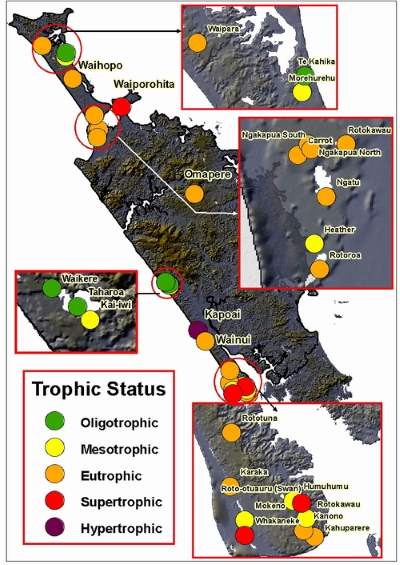Lake water quality
Lakes are graded using the Trophic Level Index (TLI), which gives a measure of the amount of nutrients in the water and an indication of a lake's overall health. The lower the score the better the lake's overall health.
Aquatic plants need many types of nutrients, including nitrogen and phosphorus, for growth. However, increased levels of nutrients can encourage excessive plant growth, particularly of pest plant species, and can also lead to algal blooms.
High levels of nutrients in the water most often come from agricultural runoff and urban wastewater. Exotic aquatic plants generally require more nutrients than native plants. The risk of extensive weed growth and algal blooms increases once a lake becomes eutrophic (high nutrients).
At the end of the monitoring season, lakes are given a TLI grade from ultra-microtrophic (very low nutrient levels) to hypertrophic (saturated) depending on their nutrient levels. The graph shows the TLI grades for the lakes that form the Lake Water Quality Monitoring Network (LWQMN). For more information, go to www.nrc.govt.nz/lakedata
Click the image below to view a larger version in pdf format (927KB)
Lake Trophic Levels 2010-2011.

